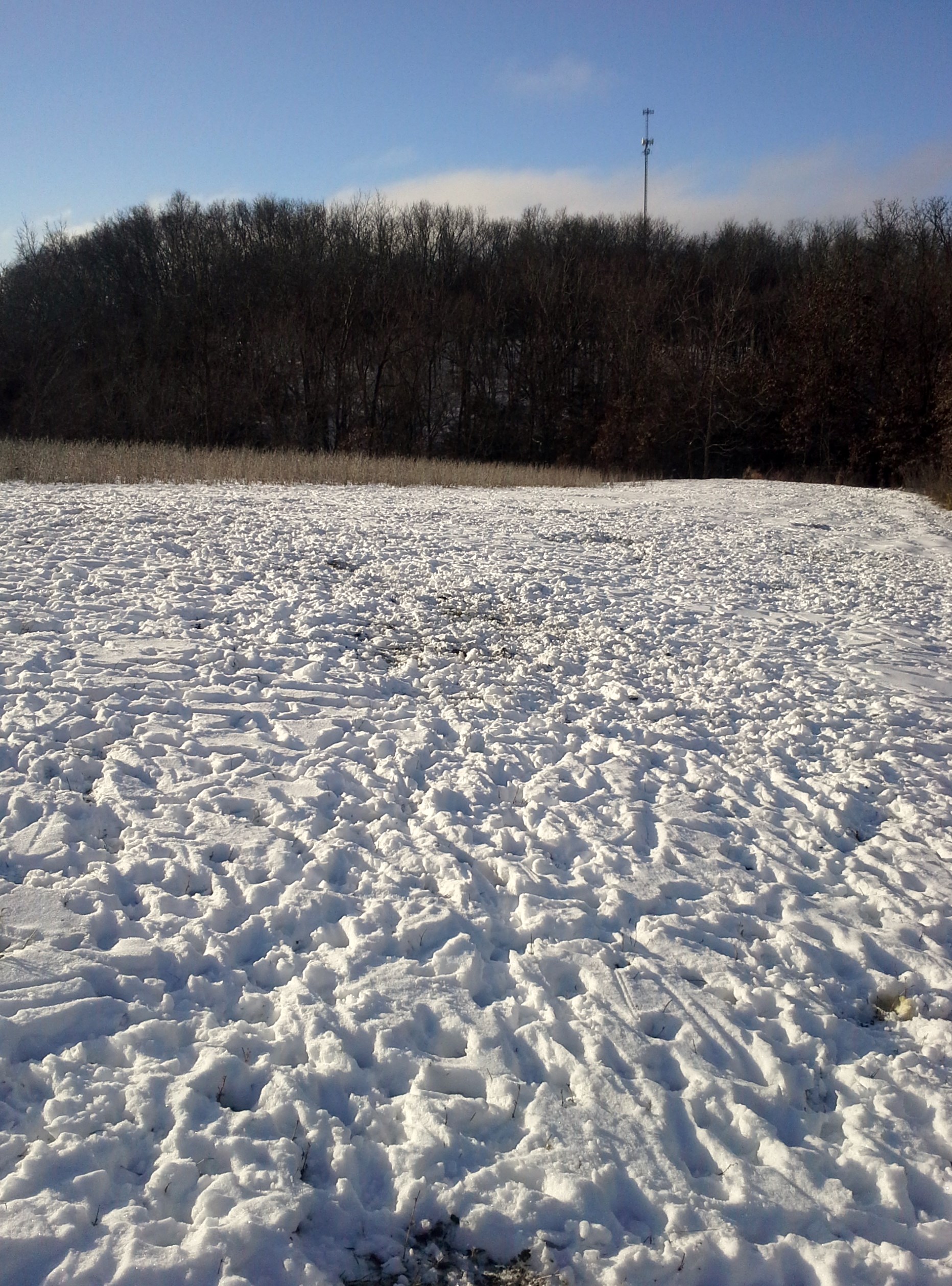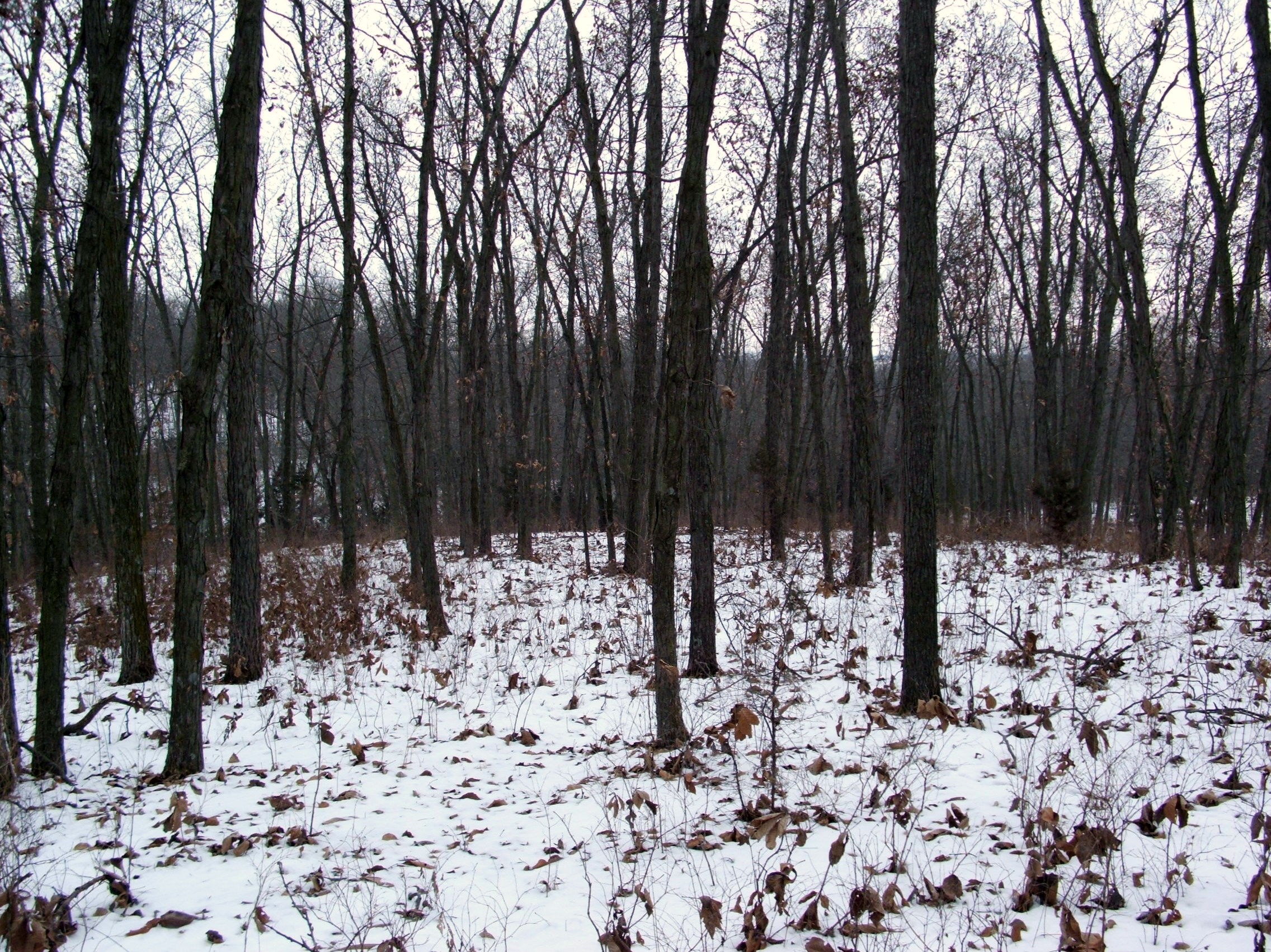December 2016 Late Season Whitetails
Plain and simple, once you reach the end of December and then move on into January, whitetail hunting becomes all about food. I know you’ve all heard this before, but it’s so true. And what is unfortunate for most hunters is the reality that if you haven’t done the work this past summer or fall, you might very well find yourself without a food source to hunt. I should be writing this article next year in April and then again in mid-summer as I prepare each year for my late season hunting during those time frames.
But it’s now December. And just like the whitetail most of us have been chasing all fall…we are worn out. In last month’s article I talked about archer’s panic. Well, it goes well beyond archery hunters as most whitetail hunters will reach a state I call hunter’s panic each year. I describe hunter’s panic as that state of mind a hunter will reach when his or her season is not quite going the way they saw it back in early October. The well thought out plans have been busted. You find yourself going into this portion of the hunting season without a good game plan, without a good food source to hunt over, and you are getting emotionally and physically burned out.
Finding the Food

Brassicas are not the most preferred food source if grains are available, but once grains are gone these brassicas are getting the attention.
As a land manager, I find myself each year planning for my late season hunting in the spring and summer. Spring is all about grain food plots like soybeans and corn…summer is all about brassicas like turnips that produce bulbs for winter hunting. Throw in some winter rye in my fall plots and I seldom have to worry about a December/January food source on my properties. But if you’ve followed along with this column you’ll also remember that I have very strong opinions about food plot attractiveness. Food sources (both natural and planted) are only as attractive as what is or is not in the area. And, food sources are only as attractive as the hunting pressure and cover that surround them.
Let me explain a little better. If you were to take 3 cereal grains and plant them in the same food plot (as I’ve done), you will find out that deer prefer oats first, then cereal rye, and then wheat. Take any two of the three away and you’ll also find that the deer will quite happily eat on the remaining food source. They only get picky when there are many food sources available. A great stand of winter rye however won’t pull as many deer as an adjacent corn or soybean plot. Take all the planted food sources away and deer will have to find something to curb their appetites. It’s finding the preferred or most used food source in your area that is the key in finding deer this time of year. I prefer agricultural type food plots because they can draw deer that are not normally using my property and because they are easier to hunt…drawing deer out of cover and into areas I have picked to hunt them. But, if you don’t have these food sources, don’t forget about natural habitat and browse.
A south facing slope with good habitat will often times contain plenty of browse to sustain deer while their metabolism slows in winter. If you’ve created good habitat on your farm or the farm you are hunting, you’ll still have good food sources available this time of year. Regenerative growth of hard woods, blackberry briar thickets, and red dogwood, are examples of preferred food sources if the non-traditional food plots aren’t available. My point is simply this…if you don’t have these awesome food plots of standing grains or greens; take a step back because deer will be eating something. If you are planning a late December hunt start looking in early December for these south facing bedding areas that have abundant supplies of native browse that deer love. There was a time when most of us had to understand and find these natural food sources. It is a much harder way of hunting compared to hunting over a well-planned out food plot, but don’t give up (don’t let hunter’s panic set in).

Open hardwoods offer very little in the way of cover or food. Deer will avoid these areas in the late season. Look for south facing slopes with thick cover.
Pressure and Security
All things being equal, I’ll take a property with little to no hunting pressure without standing grain food plots over a farm that’s been pounded for months by hunters…but has standing crops. Pressure will end a late season hunt for whitetails when your goal is a mature buck. Even if you are lucky enough and haven’t completely pressured a good buck to leave your property, pressured mature deer just won’t show themselves during daylight hours. Remember this when hunting early December during the shotgun seasons. On my farms, I simply sit out the shotgun seasons all together. I might be sacrificing a couple hunts, but by limiting pressure during this time of year I am setting up my late season hunting to be the best they can be. Deer will figure this out quickly each season and will “recover” from the annual firearms seasons much faster if they have a place they can go that is secure. It might be hard to sit out an open season for some hunters especially when getting kids involved in the outdoors or taking part in the yearly tradition. However, taking this into account, sometimes sitting out a few weeks can actually make a later hunt quite a bit better.
Weather Patterns
I like when the weather is changing especially after prolonged periods of any kind of weather pattern. Late season is no different. Any time I see a weather pattern shifting I find myself trying to get out into the field to hunt. This makes being flexible in planning your hunt crucial if you want to be in the field on the most productive days. Because a deer’s metabolism slows during this time of year, prolonged periods of warm weather will kill a hunt (pun intended). On the other hand, snow and cold weather will get deer on their feet during this time of year. Hunters must be able to adapt to these changing weather patterns and make themselves available when the hunting gets good.
Take last year for example on my farm in southern Iowa. (The same ideas are relevant no matter the location) The late muzzleloader/archery season ran from December 21st until January 10th. This gives hunters almost 20 days of hunting mixed in with the holidays and the end of most vacation seasons for hunters needing to take time off from work. Most hunters by this time of the year will not be able to take off the entire season so we must be able to hunt when it is best.
The late season started off with seasonable weather, southerly winds, no snow on the ground, and a falling barometer. There was nothing too outstanding about the first couple of days. By Wednesday of the first week, high temperatures were mid to upper 50’s across most of Iowa…not something I equate with good hunting this time of year. On that Wednesday however, the lingering low pressure got blown out by a high pressure system that rolled in bringing higher winds during the onset, colder temps, and a sharply rising barometer. That Wednesday through Friday, the 23rd-25th, brought last year’s first good hunting of the late season. It went from highs near 60 to highs just above freezing with almost a full barometer point increase. Then the fog and rain came in…remember?
By the end of the year, some snow came into play. The snow brought with it some colder temps and the hunting once again was good for a couple days. When January came around, it was pretty obvious that this was going to be a warmer than usual season…hampered by fog, rain, and southerly winds with only an occasional break with colder temps. The 3rd of January was cold followed by 5 straight days of south winds with above average temps. On Saturday the 9th, the winds once again switched to the North. The temperatures started to plummet and the barometer once again started its climb. Sunday the 10th brought the coldest day of the late season with higher pressure and consistent norther winds. Temps were barely in the teens. Over the course of the entire late season, there were really only a few days of “predictably” good action with the last days being the best. Being able to watch for these favorable weather patterns and take advantage of them can pay big dividends. My favorite days this time of year are days surrounding changing weather with cold temperatures and snow!
Hunter’s Fatigue
I talked earlier about what I call hunter’s panic. But I also think there is such a thing as hunter’s fatigue. It’s when we start getting burned out…especially if our season isn’t going well and we are not on deer. Early on, it seems a lot easier to sit on stand for hours on end…now not so much right? I bring this up because if you do get good weather for December and January hunting is going to mean cold and nasty. The last thing a hunter who is burned out is going to want to do is sit exposed on stand for several hours in blowing winds and freezing temperatures. This is why for several years now I have almost completely gone away from traditional tree stand hunting to using enclosed blinds. The more sealed and comfortable the better. Pop-up style blinds are the minimum with home- made wooden or store bought sealed blinds the preference. I once picked on some hunters for being “too soft” to be able to handle a frigid sit on stand…not any more. Comfortable blinds that keep me out of the wind and cold are my preference. It helps with the fatigue I feel this time of year but they also do a fantastic job of helping with scent control and concealment when there are a bunch of deer out in front of me on a late season food plot. I put the blinds as far away as I can effectively shoot from where the action is. If I’m still archery hunting I’ll try to place the blinds across the food plot from where the deer enter and hope my target animal makes his way to me. A big mistake hunters make this time of year is setting up right on top of the deer…and while this might work your first time in you will quickly burn out your hunting spot as deer start to bust you on stand.
The biggest obstacle hunters face this time of year is giving up. Hunting is never a guarantee unless of course you don’t go.
2017 Hunt 365 will once again be a monthly column in The Iowa Sportsman and here on Full Potential Outdoors! I’ll kick off 2017 will some information on what I look for in buying or leasing a new farm. I will once again be covering habitat and food plot scenarios for you in 2017. I hope you’ve enjoyed this column as much as I have enjoyed writing it for you! Good luck out there!
